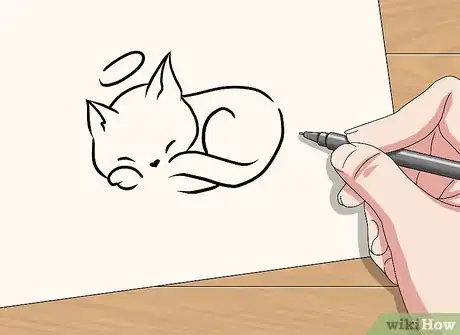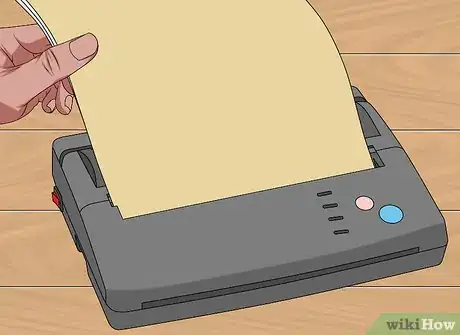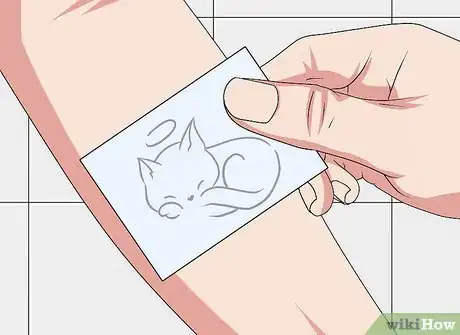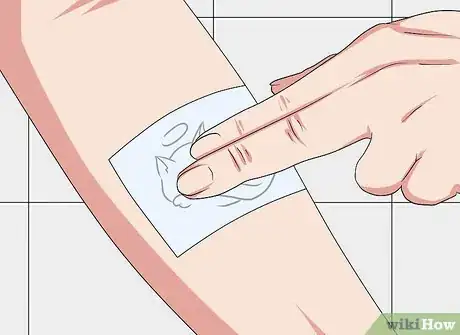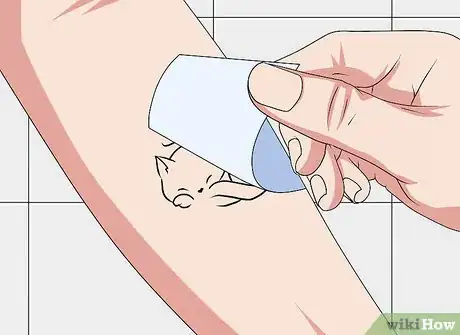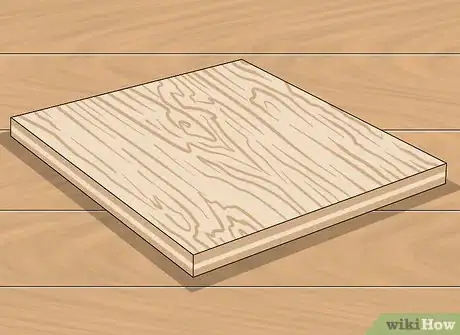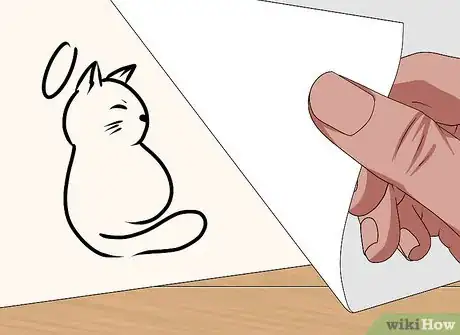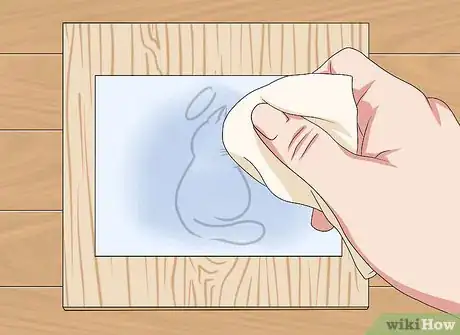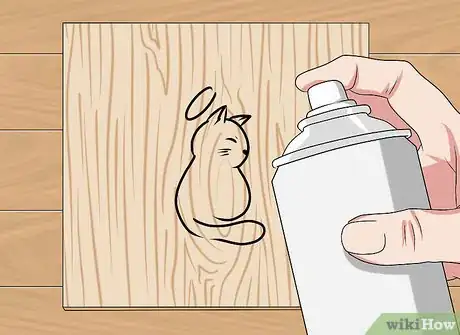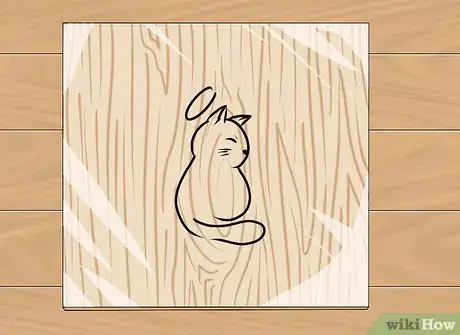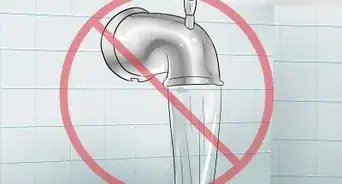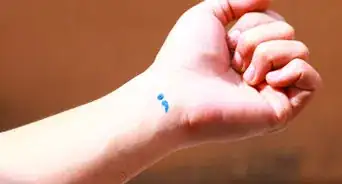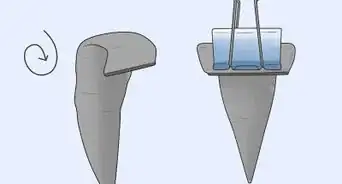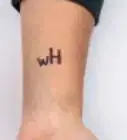This article was co-authored by Michelle Myles. Michelle Myles is the Co-owner of Daredevil Tattoo, a tattoo shop located based in New York City's Lower East Side. Michelle has more than 20 years of tattooing experience. She also operates the Daredevil Tattoo Museum, co-owner Brad Fink's personal collection of antique tattoo memorabilia that he has amassed over the last 27 years of tattooing.
There are 8 references cited in this article, which can be found at the bottom of the page.
This article has been viewed 197,482 times.
Tattoo transfer paper is what tattoo artists use to turn your pencil tattoo design into the guide for your actual tattoo. The most common way to use tattoo transfer paper is use a thermographic type of paper to transfer your tattoo design to your skin. But you can also use printable tattoo transfer paper in certain craft projects.
Steps
Using Thermographic Transfer Paper
-
1Create your tattoo design in pencil. Draw the tattoo design you’d like on a regular sheet of printer paper, in pencil. It should look exactly how you want your tattoo to look, because it will transfer exactly that way to the transfer paper.[1]
-
2Slide your original design under the carbon paper. Thermographic transfer paper actually comes in a set of three sheets – an under sheet, a black piece of carbon paper, and a top transfer sheet where the carbon copy will appear. Place the piece of paper with your original design under the carbon paper and on top of the under sheet.[2]Advertisement
-
3Put the whole set of papers through a thermographic transfer maker. This is specialty equipment that you can find in some tattoo shops. Some printing shops might also have the transfer maker you need. Exactly how you feed the papers in will depend on the exact model maker you have, but the design should always go in face down.[3]
-
4Remove the top carbon copy from the rest of the transfer paper. Once you’ve run the transfer paper through the transfer maker, you’ll have an exact replica of your initial design on the top piece of carbon paper. Tear the carbon copy off of the set of transfer paper. [4]
-
5Situate the carbon copy where your client wants the tattoo. It might take a couple of tries to get your design exactly where the customer wants it. Ask them repeatedly to make sure they're happy with the eventual position.[5]EXPERT TIPMichelle Myles is the Co-owner of Daredevil Tattoo, a tattoo shop located based in New York City's Lower East Side. Michelle has more than 20 years of tattooing experience. She also operates the Daredevil Tattoo Museum, co-owner Brad Fink's personal collection of antique tattoo memorabilia that he has amassed over the last 27 years of tattooing.Tattoo Artist & Co-owner, Daredevil Tattoo

 Michelle Myles
Michelle Myles
Tattoo Artist & Co-owner, Daredevil TattooConsider whether a stencil is needed for your tattoo design. Creating a stencil allows the client to see the design on paper beforehand, and it allows you to move the tattoo around if you need to. However, if you're incorporating a new tattoo with existing tattoos, sometimes it's easier to work freehand.
-
6Wet down your customer's skin with soapy water. Mix up a solution of soapy water – it should be soapy enough that you get bubbles. You can use a regular, mild dish soap. Dip a cloth in the soapy water and then rub it on the skin where the tattoo will go.[6]
-
7Press the carbon copy down onto your client's skin. Once your client's skin is wet with soapy water, realign the carbon copy of the tattoo over the skin. Ask for your client's approval of the placement, and then press the carbon copy down. Use your hands to completely smooth it out. As you do that, press down, to make sure that the design transfers.[7]
-
8Lift off the carbon copy. As you lift the carbon copy away from your client's skin, you should see the transferred design. If you notice there are places where the design didn’t come through, lay the carbon copy back down gently and press a bit harder.[8]
-
9Repeat these steps if your client isn't happy with the placement. Ask you client to approve the final placement once the design has transferred. If they aren't happy, remove the design by wiping down your client's skin with rubbing alcohol on a cotton ball. Repeat the process to create a new carbon copy of the design and apply it to your client's skin.
Transferring Images onto Crafts
-
1Prepare the surface of your craft. You can use transfer an image to pretty much any sturdy surface: wood, plastic, even canvas. Make sure the surface is clean and that any paint you want to use is dried.[9]
-
2Print your chosen images on printable tattoo paper. You’ll need to download your image (or images) of choice to your computer, and then print them on printable tattoo paper. This paper is usually available at most craft stores, or from online retailers like Amazon.[10]
- Make sure the image you want to print on the paper will fit onto your craft. You might have to size it down a bit to make it fit.
-
3Apply the included adhesive to your image. The pack of printable tattoo paper will come with an adhesive sheet. Peel the protective layer off the adhesive – it’s usually a bright color like green – and smooth it over the image you’re using. Then trim around the edges of your image, cutting the adhesive sheet down as closely to the outline of the image as possible.
-
4Peel the clear plastic film off the image. With the adhesive sheet on the image, it will now have the layer of adhesive and then a layer of clear plastic film over. Peel this clear film back to expose the sticky layer of adhesive on top of the image.
-
5Place the image picture-side down on your craft. Before you stick it to your object, make sure you have it lined up the way you want it. You can’t unstick the image if it’s a little off-center, so be careful when you’re applying it.[11]
-
6Moisten the back of the image with a wet towel. You can use a cotton towel or paper towel for this step, but a cotton towel works best. Press the damp towel down on the back of the image gently, until the whole thing is moistened.[12]
-
7Peel the backing paper off gently. Start at a corner of the image, and gently pull the backing paper back. As the paper comes back, the image should stay on the surface of your craft. If you notice that the image is also pulling away, put the backing paper back down and remoisten that area.[13]
-
8Seal the image with a glaze spray. This type of spray is available at most craft stores. It will seal the image and prevent any of the ink from flaking off in the future. Let the glaze fully dry before you move your craft – about 30 minutes.[14]
-
9Finished.
References
- ↑ https://www.youtube.com/watch?v=C8_f1gWbM6A&feature=youtu.be&t=25
- ↑ https://www.youtube.com/watch?v=C8_f1gWbM6A&feature=youtu.be&t=37
- ↑ https://www.youtube.com/watch?v=C8_f1gWbM6A&feature=youtu.be&t=85
- ↑ https://www.youtube.com/watch?v=C8_f1gWbM6A&feature=youtu.be&t=113
- ↑ https://www.youtube.com/watch?v=C8_f1gWbM6A&feature=youtu.be&t=87
- ↑ https://www.youtube.com/watch?v=C8_f1gWbM6A&feature=youtu.be&t=123
- ↑ http://tattooswin.com/tattoo-transfer-paper/
- ↑ http://tattooswin.com/tattoo-transfer-paper/
- ↑ http://blog.consumercrafts.com/seasonal/winter/image-transfer-tattoo-paper/
- ↑ http://blog.consumercrafts.com/seasonal/winter/image-transfer-tattoo-paper/
- ↑ http://blog.consumercrafts.com/seasonal/winter/image-transfer-tattoo-paper/
- ↑ http://blog.consumercrafts.com/seasonal/winter/image-transfer-tattoo-paper/
- ↑ http://blog.consumercrafts.com/seasonal/winter/image-transfer-tattoo-paper/
- ↑ http://blog.consumercrafts.com/seasonal/winter/image-transfer-tattoo-paper/
About This Article
To use thermographic transfer paper for tattoos, start by creating your design in pencil on a regular sheet of printer paper. Next, put your original design under a piece of carbon paper and on top of the under sheet, and put the set of papers through a thermographic transfer maker. Once you run the papers through the machine, you’ll have a replica of your design on carbon paper. You can then wet your client's skin with soapy water and press the carbon copy of the tattoo on. To learn how to transfer tattoo images onto crafts, keep reading!
